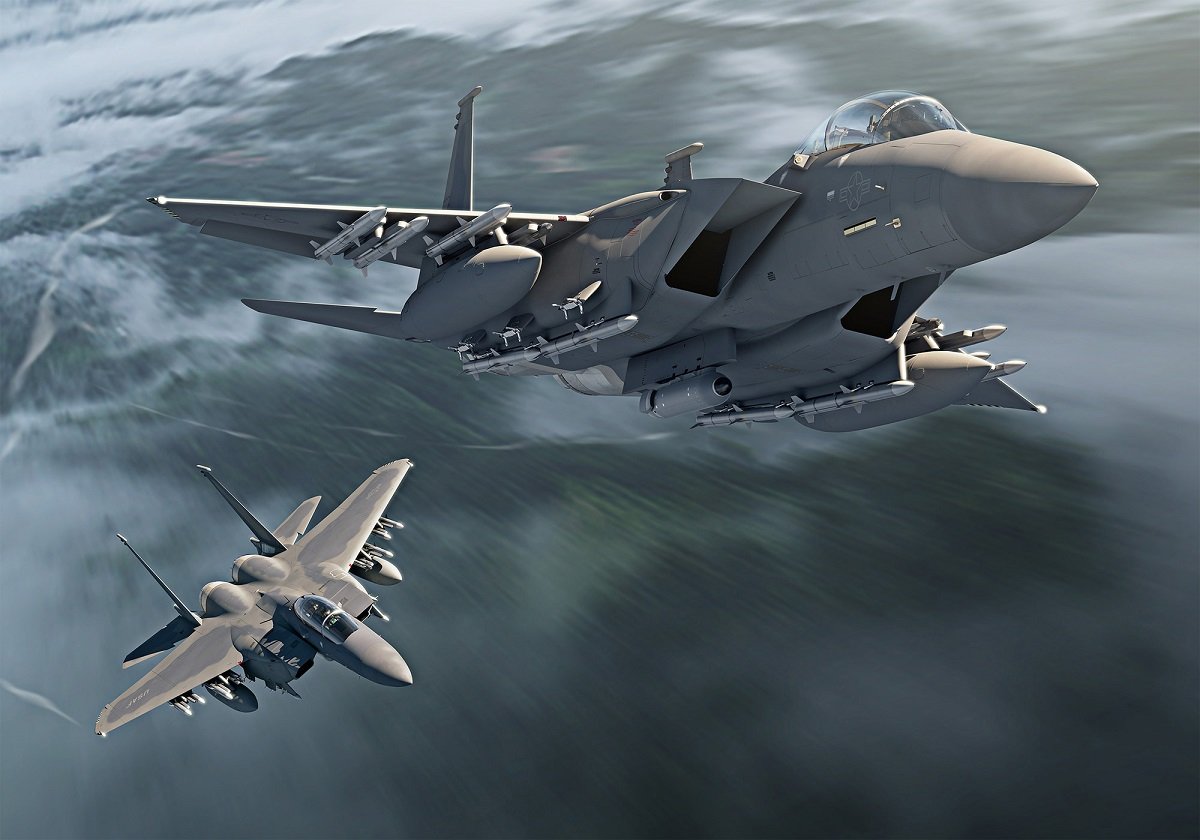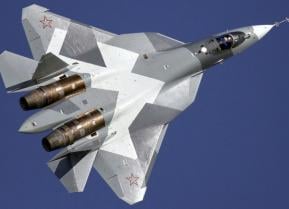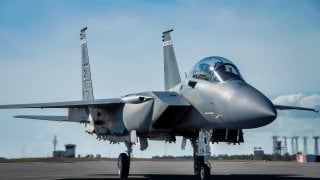F-15EX Is No Stealth Fighter: Is That Really So Bad?
The Boeing F-15EX does not have stealth properties like the F-35 or the F-22 Raptor. They might not be needed depending on the mission.
F-15EX - It isn't stealthy, but is it needed? Perhaps surprisingly, the fifth-generation F-35 Joint Strike Fighter is not the costliest jet currently being produced in America today.
The Lockheed Martin-produced powerhouse may be considered the most capable of flying the skies by military experts and analysts. However, an older airframe has it beat regarding the price tag.
The latest Eagle variant, F-15EX, costs roughly $90 million per airframe. The F-35A comparably is priced at about $7.5 million less. Although the McDonnell Douglas Eagle is nearing its fifth- decade in service, the newest variant of the platform hosts a range of capabilities that make it quite formidable in the modern aviation arena.
The F-15EX - or also called the F-15EX Eagle II - may not retain the stealth of its fifth-generation counterparts, but the fighter certainly should not be written off.
An overview of the F-15
In the early days of the Vietnam War, the U.S. Navy and U.S. Air Force desired a new tactical aircraft that could operate in both service’s respective mission sets.
Then-Defense Secretary Robert McNamara decided that a singular platform that could fulfill the needs of the Navy and Air Force was essential.
Following this policy, both services embarked on the TFX program, which culminated in the F-111 long-range interceptor aircraft.
While this jet was highly capable, the Navy desired an air superiority fighter. Eight manufacturers competed to develop the new fighter, submitting proposals comprising hundreds of design concepts.
From higher top-speed abilities and variable-sweep wing designs, these aircraft proposals were advanced but could not be considered an air-superiority platform due to size and weight.
By the late 1960’s, the USSR was ramping up its own fighter development programs. The Mikoyan-Gurevich MiG-25 debuted in 1967, featuring a range of capabilities, including high speed.
In order to compete with the Soviet’s new airframes, the Navy tasked manufacturer Northrop Grumman with creating a smaller and more maneuverable design.
This VFX program would later evolve into the Grumman F-14 Tomcat. One year later, requests for proposals were released to major aerospace companies in the U.S. requiring a single-seat fighter with a maximum take-off weight of 40,000 pounds and a top speed of Mach-1.5 (times the speed of sound).
Four companies would submit proposals, and McDonnell Douglas was eventually selected as winner.
F-15 Specs
Since its entry to service many decades ago, the F-15 Eagle has proven to be a staple platform in the Air Force’s fleet. Not only can this powerful fighter fly at speeds reaching Mach-2.5 but can also lug an array of advanced munitions including JCAMS, Small Diameter Bombs, Sparrows and air-to-air Sidewinders.
Perhaps the most significant capability featured by the Eagle is its multimission avionics system, which includes a head-up display, inertial navigation system, advanced radar, ultrahigh frequency communications, tactical navigation system, and instrument landing system.
As detailed by the U.S. Military, the Eagle’s pulse-Doppler radar system can detect all high-flying and low-flying targets without being disoriented by ground clutter.
Additionally, it can locate and track airframes at distances beyond visual range. This feature, coupled with the platform’s top-notch electric warfare system, makes the Eagle a formidable dogfighter.
F-15EX Is a Bomb Truck
Since its introduction to service in the 1970s, the Eagle has undergone several facelifts in order to retain an edge over competitor platforms.
The most recent F-15EX iteration made history when it broke records in tonnage and quantity of ordnance carried earlier this year. In January, this new Eagle variant exceeded expectations when it could carry and fire up to a dozen air-to-air missiles during test flights.
In the past, similar jets could only carry between six and eight missiles, making this accomplishment quite the feat.
Will the F-15EX Eagle II acquisition be worth it?
The new Eagles are designed to function in various roles, including as future Collaborative Combat Aircraft and other drones, provide new sophisticated electronic warfare capabilities and serve as launch platforms for hypersonic weapons.
Initially, the Air Force intended to procure at least 144 F-15EX jets. However, this number has dwindled and now stands at 104 Eagle IIs.

Some analysts have argued that this number is insufficient to make a difference in future conflict. But the Air Force remains confident that the new Eagle IIs will be useful assets. During the service’s 2022 Fiscal Year budget proposal, the F-15EX was described as “an outsized weapons truck” that could carry advanced munitions that may be too hefty for other tactical combat fighters to host.
Even though the F-15EX Eagle II does not possess stealth or other fifth-generation characteristics, the iteration could still play a critical role in the service if used alongside the Air Force's impending Next-Generation Air Dominance (NGAD) program.
About the Author
Maya Carlin is an analyst with the Center for Security Policy and a former Anna Sobol Levy Fellow at IDC Herzliya in Israel. She has by-lines in many publications, including The National Interest, Jerusalem Post, and Times of Israel. You can follow her on Twitter: @MayaCarlin.
All images are Creative Commons.


